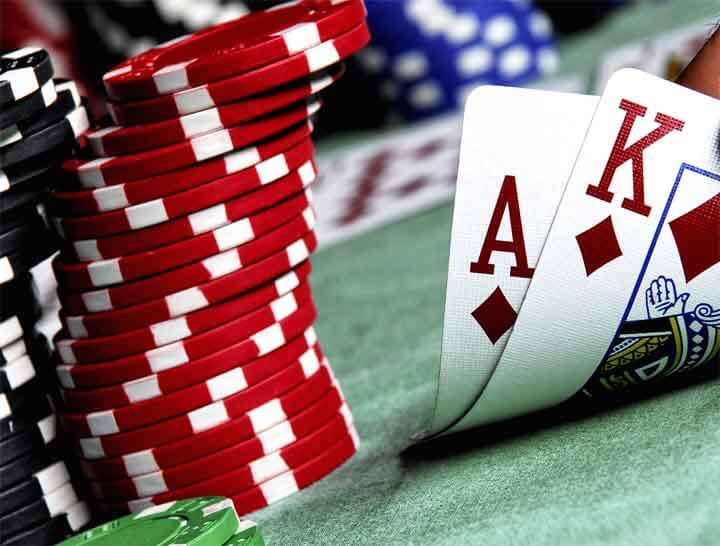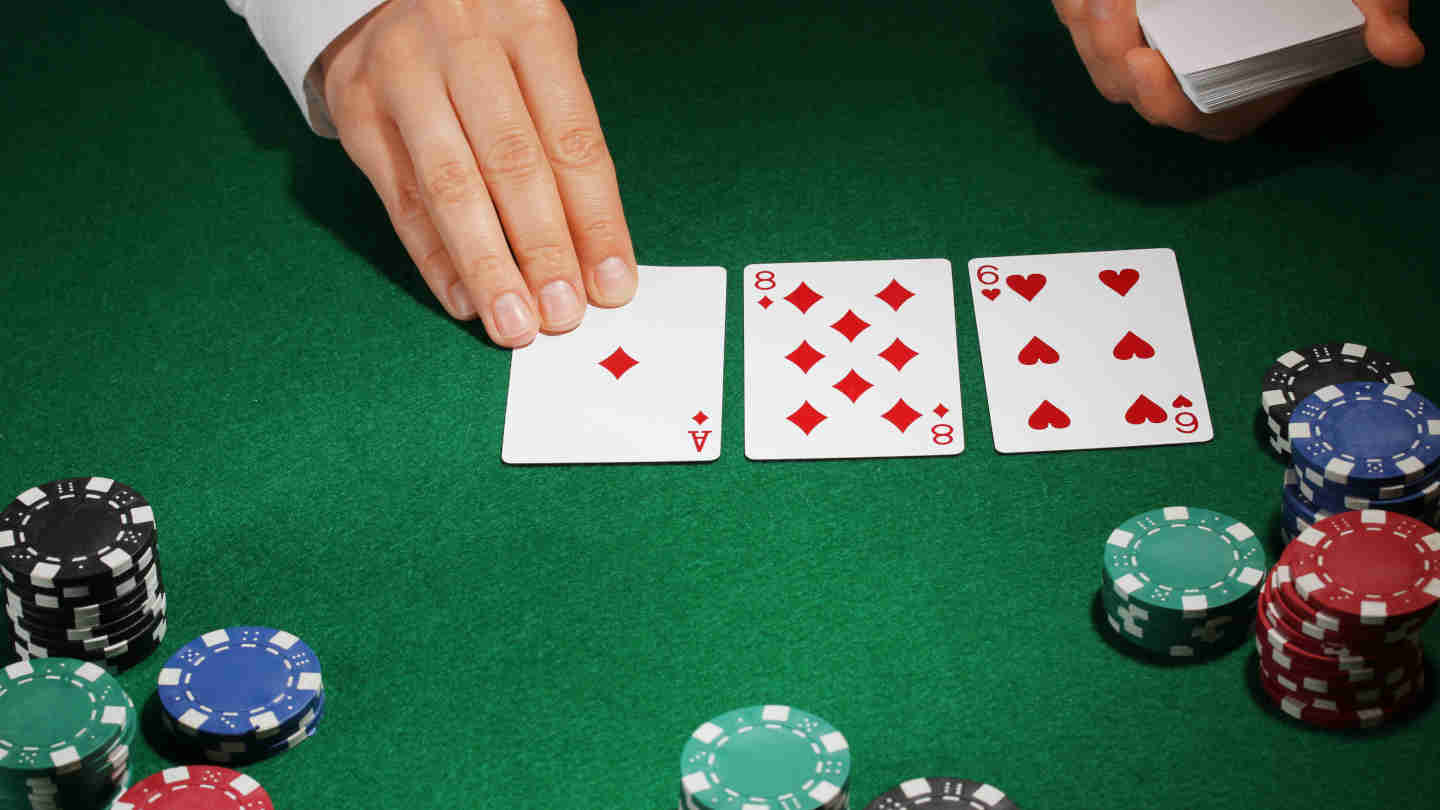SPR Poker Tips – Master Stack to Pot Ratio and Use It to Your Advantage

9 minutes
Effective stack size and bet sizing are some of the most important concepts in poker. The truth is that you can’t really be a successful poker player if you don’t understand these concepts.
Stack to pot ratio is another one of the basic concepts that all good poker players understand. Just as you would think, SPR is the ratio of the effective stack and the current pot size on any betting street.
SPR in poker is an often overlooked concept, especially by novice players. However, it is one that true poker champions understand and are aware of at all times.
In this article, I go into what poker SPR is, how it works at different stack depths, and how you can use it to improve your game.
Whether you are a tournament player or a cash game specialist, you will want to keep reading to learn how the stack to pot ratio works and how you can use it to your advantage.
Calculating and Using Stack to Pot Ratio
Before you can calculate your SPR in any given hand, you will need to understand what an “effective stack” is in poker.
The effective stack is either yours or one of your opponents’ stacks, depending on which one is smaller.
Simply put, it is the biggest amount of chips you can possibly lose in the hand.
For instance, if you are playing in a tournament and are sitting with 20,000 chips and get heads up with a player who has 8,000 chips, the effective stack will be 8,000 since you can’t really lose the other 12.000.
The SPR in poker is very easy to calculate. You simply divide the remaining effective stack by the size of the pot.
In the example above, let’s assume you raised to 300 at 50/100 blinds, and your opponent called in the big blind. The pot would now be 300 + 300 + 50 (small blind) = 650.

To calculate the SPR, you would divide the remaining stack (7.700) by the pot size (650). This would mean that the SPR is 7.700/650 = 11.85.
Once you have calculated the SPR, you can begin to create your strategy for future betting streets. Different hands have different playability at different SPRs, and this is something you need to learn.
For that reason, let us examine how you may want to play at deep, medium, and low SPRs with particular hand types and why.
Deep Poker SPR: Looking to Make Big Hands
You can consider an SPR in poker to be deep anytime it goes to above 10. These types of SPRs are usually found in single raised pots in the early stages of tournaments or in cash games.
A deep stack to pot ratio means that there may be a lot of play left on the flop, turn, and river. As such, you will be looking to play in position and with hands that can make straights and flushes.
The main thing to consider when playing with a deep poker SPR is that hands like top pair or weak two pair are often beat if all the money goes into the pot.
Deep SPRs are spots where flush draws and open-ended straight draws shine, as they give you plenty of opportunities to make multi-street bluffs against one-pair hands.
With the deep stacks behind, your opponents will often have to make a difficult decision to call off their chips on a dynamic board, which can be extremely difficult.
For this reason, the range of hands you can play is increased, but in favor of suited hands, connectors, and small pairs. Hands like weak aces or off-suit broadways lose a lot of value in these situations.

If you are going to see a flop with a hand with a poker SPR of over 10, you will much rather do so with 98 suited than QT off-suit, simply because the hand has so much more playability and is better disguised.
If you think of the concept of small-ball poker, these are exactly the times to apply the strategy. The deep stack allows you plenty of chances to make big hands and get paid if you do.
The thing to be extremely careful of in these situations is not to get stacked with one pair too often unless you are playing against an absolute maniac.
Medium SPR in Poker: All About the Balance
Medium SPR situations arise very often in tournament poker. These spots can be quite tricky to play, as the line between getting aggressive and playing conservative can be quite thin.
All SPRs between 3 and 10 belong to this category, meaning there are many different spots that can arise. The lower the stack to pot ratio, the more aggressive you will want to get on flops and turns. On the other hand, a slightly deeper SPR will warrant some caution.
You will often be looking at a hand like a flush draw or the top pair, medium kicker, on the flop. In these situations, it will often come down to getting the money in or just calling a bet.
My suggestion is to lean towards taking the aggressive line when you have an SPR of 3 – 6 and become more conservative you get into the 7 – 10 territory.
Again, the reasoning seems pretty clear. If a player bets half pot and you jam in your stack with an SPR of 8, you will seldom get called by worse than one pair.
On the other hand, when your SPR is closer to 5, a shove on the flop with a top pair and a decent kicker can easily get called by a worse top pair, draws, or even a second pair.
When deciding how to act with your hands, you should always consider which end of the spectrum you are in and how this might entice your opponents to play against you.
Short SPR: Time to Get It In
Short poker SPR spots often arise in the late stages of tournaments and sometimes in cash games or earlier in tournaments when multiple raises are made before the flop.
Any SPR below 3 can be considered short. However, it is very important to keep in mind how this situation came to be.
In a late stage of a tournament, such an SPR situation can happen with a single late position raise and a big blind call. On the other hand, in a cash game, this is usually a product of a four or five-bet.

In either case, if you have played your hand in a way that brought you to the flop with an SPR of under 3, you should be looking to get the money in if you flop a pair or a solid draw.
The reason is that there simply isn’t that much wiggle room left, and you certainly don’t want to be bluffed off your hand when you are already pot committed.
Short SPRs are generally the easiest to play as there is so little chance to take creative lines. Some nice bluffs can still be incorporated, but for the most part, you will have to play the cards you are dealt.
Hands with high cards such as any broadways or medium aces are reasonable options in short SPR situations, as a top pair will often be good enough to play for all the chips.
Using the SPR Poker Knowledge to Your Advantage
The SPR poker knowledge is really one of the key concepts you need to understand to be a winner in the game. In many spots, your opponents will not be careful about it, and this can give you a great advantage.
Live cash games and tournaments and low-stakes online games are ideal opportunities for you to use your understanding of the SPR to your advantage.
The main way to use this number to your benefit is by adjusting your hand ranges in different pre-flop situations, understanding what kind of SPR spots these actions will create.
For example, at a high stack to pot ratio, you will want to make many calls with suited connectors and small pairs, looking to make straights, flushes, sets, and full houses.
On the other hand, as the poker SPR gets lower, you may want to consider letting these go. Instead, focus on making top pairs and getting it in on the flop or the turn.

Of course, as your poker career advances, you will want to learn more about specific SPRs and how to play specific parts of your range on them, but all in good time.
For beginners, it is most important to keep in mind that deeper SPRs mean more big pots will be won by massive hands, while at lower SPRs, one pair or two pair will usually be good enough.
Creating the SPR You Want
One of the main poker skills you should master before you jump into playing more serious games is how to shape the SPR in a way that benefits your particular hand or hand range.
At the highest of stakes, where the poker’s elite play, it is very important to keep your ranges and bet sizes balanced.
However, in most games, there is a lot of room for exploitation.
Let us consider a specific example of a poker hand. You are playing in your local $2/5 poker game, and you have bought in for $500. The first hand out of the gate, you get Ad Kd in the big blind.
The UTG+1 raises to $20, and two players call. You will see many novice players just call here, leaving the stack to pot ratio relatively high. Their reasoning would be that players don’t fold enough to re-raises, and if they miss the flop, they could lose a big pot with just an ace-high.

In reality, you would want to re-raise this hand, probably to about $120. If one of your opponents decides to get sticky and call, the SPR will be ideal for you. With $282 in the pot, you will have an easy decision on many boards.
If you can hit an ace or a king, you can easily get paid. If you just end up with two overcards on a low board, the odds are still good you have the best hand and your opponent will fold to a shove.
Now, let us imagine we had the same Ad Kd hand but were seated on the button with a $2,200 stack and our opponents all covering us, late in the session.
In this situation, it may actually be beneficial to just call the raise. If we hit an ace or a king, we may end up winning a medium-size pot by navigating the post-flop game to our advantage. If we can make the nut flush or top two pair, we may end up stacking a weaker hand.
If we did decide to re-raise with our $2,200 stack, we might want to make it big, like $200. Live game players may still call, but we will be getting a poker SPR of about 5, which is closer to where we want to be if we hit just one pair.
A re-raise to $120 could get us into trouble on later streets if we allow our opponent to make two pair or better and we are left dominated and drawing to just three outs.
Poker SPR Summary
Poker is an extremely complex game with so many variables. However, the concept of the stack to pot ratio will help you greatly reduce the number of possibilities and navigate tricky spots better.
It’s very easy to approach poker hands with just cards in mind, but it is of the utmost importance that you consider your and your opponents’ stacks in every hand as well.
The size of the effective stack will be crucial to how the hand develops after the flop, so keep it in mind before the flop and keep learning how to skew the SPR to your favor in any given situation.
- Poker Squeeze Play – Which Hands Make the Most Sense for Squeezing? - August 10, 2023
- How to Play Low Pocket Pairs in Texas Hold’em - July 29, 2023
- How to Make Deep Runs in MTTs More Often - July 22, 2023















